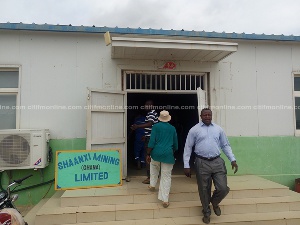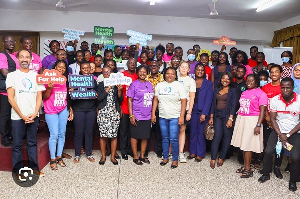The second mineworker involved in the underground accident that took place in the Shaanxi Mining Ghana Limited’s mine on Wednesday, December 11, 2019, has died aged 39.
Moses Bataribanaa was taken to the Upper East Regional Hospital with broken ribs after a hanging rock fell on him and a blast-man, Richard Nakpier, on the evening of that Wednesday in the Talensi District.
Richard was declared dead on arrival but Moses, still breathing, was referred to the Tamale Teaching Hospital. Many, considering his condition, harboured strong doubts he would make it as an ambulance carrying him raced to the Northern regional capital.
“He is on admission with fractures of the left ribs. He has difficulty breathing. Without oxygen, it is not good at all. But he is stable. He is conscious. He can talk. Except that he has difficulty breathing because of the pain. The left leg to the knee has some abrasions.
“The foot is swollen with the ankle. He is on treatment and awaiting referral to the teaching hospital for further management. One was brought in dead,” Dr Samuel Aborah, a clinical coordinator at the Upper East Regional Hospital, had told Starr News a day after the mid-week misfortune.
He is the second native of Yinduri, a community in the district, to have suffered a mining-related death this year after an explosion, triggered on Wednesday, January 23, 2019, by the Shaanxi Mining Ghana Ltd at Gbane, the community where the Chinese company operates, killed 17 native miners from different parts of the district.
Unbroken Chain of Disasters
Mining-related fatalities in the endowed-but-deprived district are at an ‘overwhelming’ frequency where security officials are waxing weary of wiring situational reports on the unending disasters claiming and maiming lives under the watch of traditional and political authorities.
Even the Public Relations Officer of the Shaanxi Mining Ghana Ltd, Maxwell Wooma, declared with a tone of ‘surrender’ in the wake of another accident in December, this year, that: “These accidents and fatalities have become one too many. There is a need for general overhauling of safety codes in the mine. For now, we will submit ourselves to investigations and also use this time to revisit all safety practices before anything can continue.”
Since the arrival of the Shaanxi Mining Ghana Ltd in the area in 2008 at the invitation of two local mining groups, Yenyeya and Pubortaaba, the district has, up to the present time, suffered a chain of tragedies many locals invariably blame on the Chinese.
On May 26, 2013, three small-scale miners died when gas from an explosive submerged a mining tunnel. Again, three miners perished when a mining pit collapsed on them in October 2014. On Wednesday, April 2, that same year, 2 miners were gassed to death and one person was severely injured. In April 2015, 2 miners lost their lives and 8 were critically injured after an explosive went off underground in the same area.
Some 16 small-scale miners were rushed from the community to the Upper East Regional Hospital after inhaling toxic gas from a mining explosive in 2016. Seven miners were trapped several feet underground whilst scooping gold ore in September 2017. They all died unprepared, leaving behind a number of helpless wives and children.
On October 23, 2018, one underground driller was killed and three others were choked by a deadly gas from a mining explosive in a Shaanxi mining pit accident. In January 2019, the deaths of 17 mineworkers— the worst disaster caused by a Shaanxi’s explosive blast in the history of mining in the community— shook Ghana to an extreme degree.
Regional News of Tuesday, 24 December 2019
Source: starrfm.com.gh

















